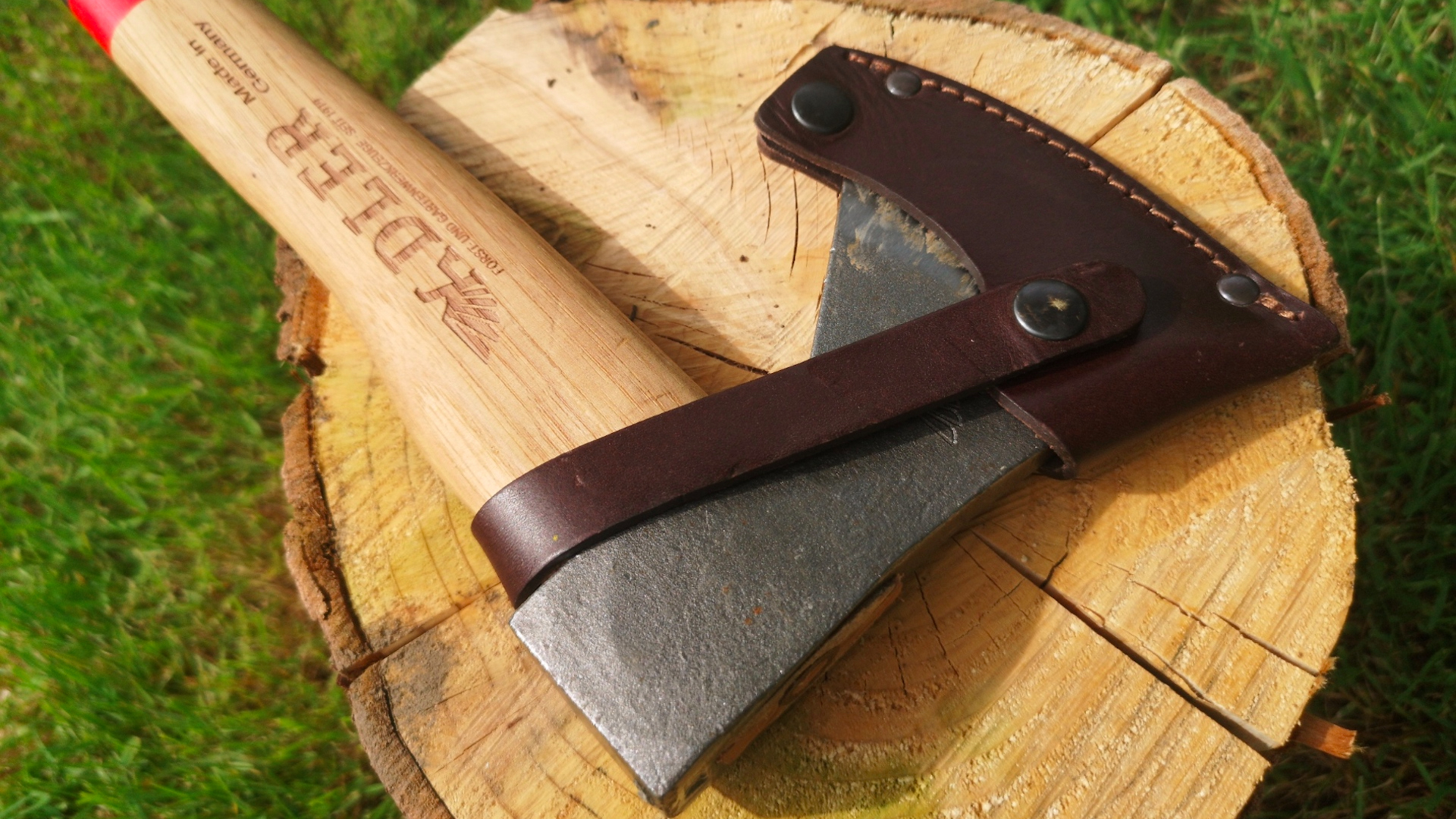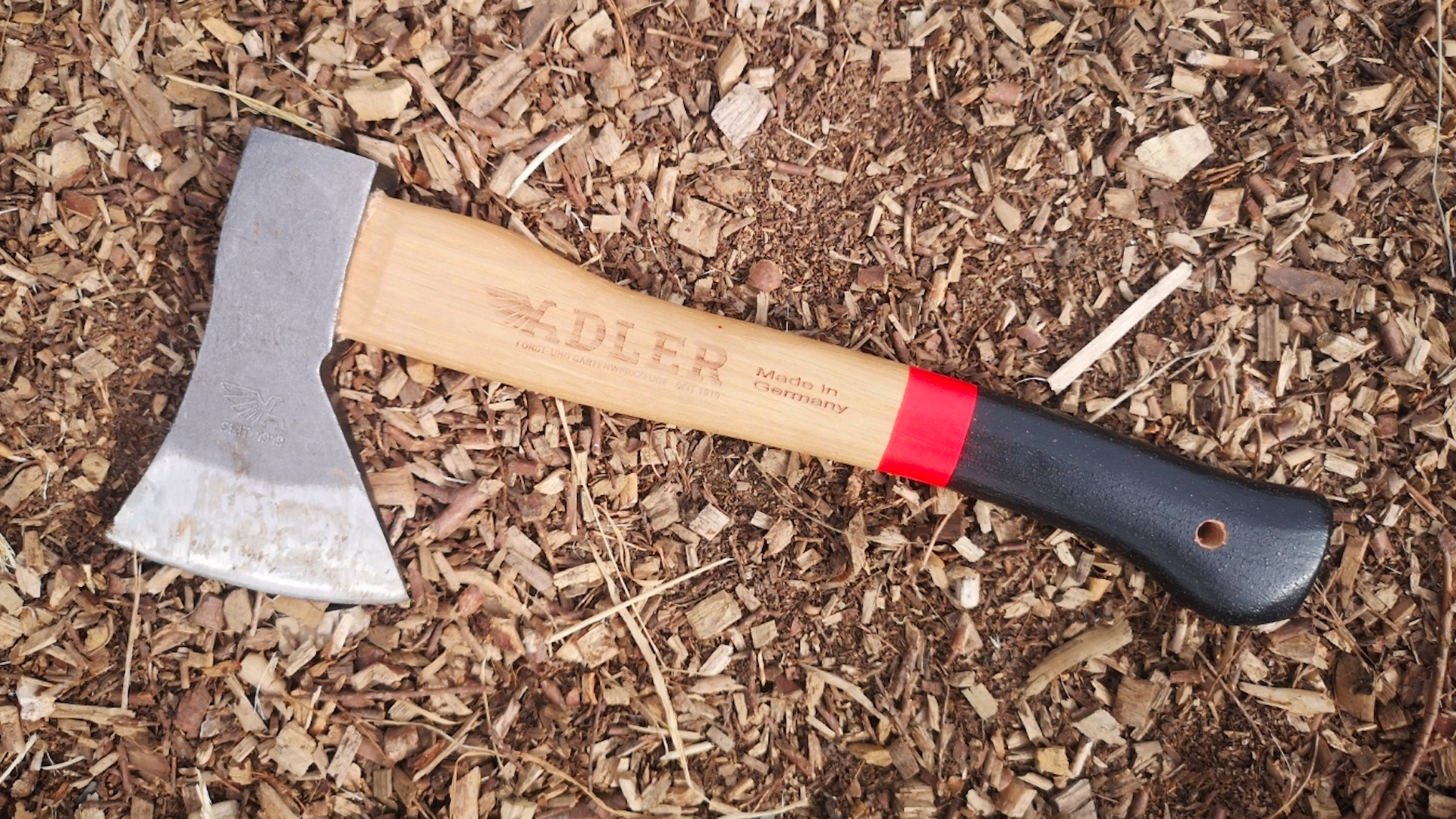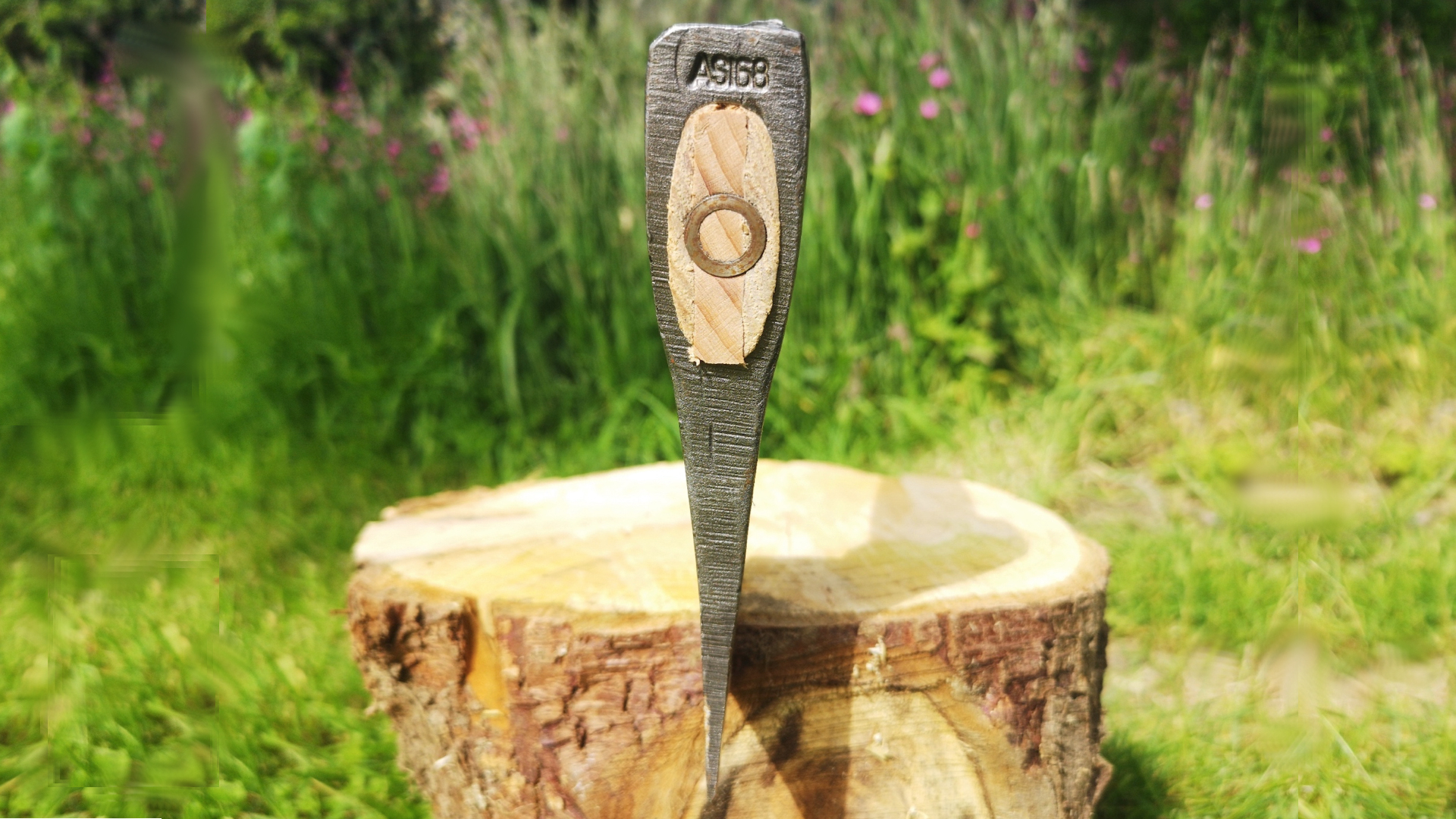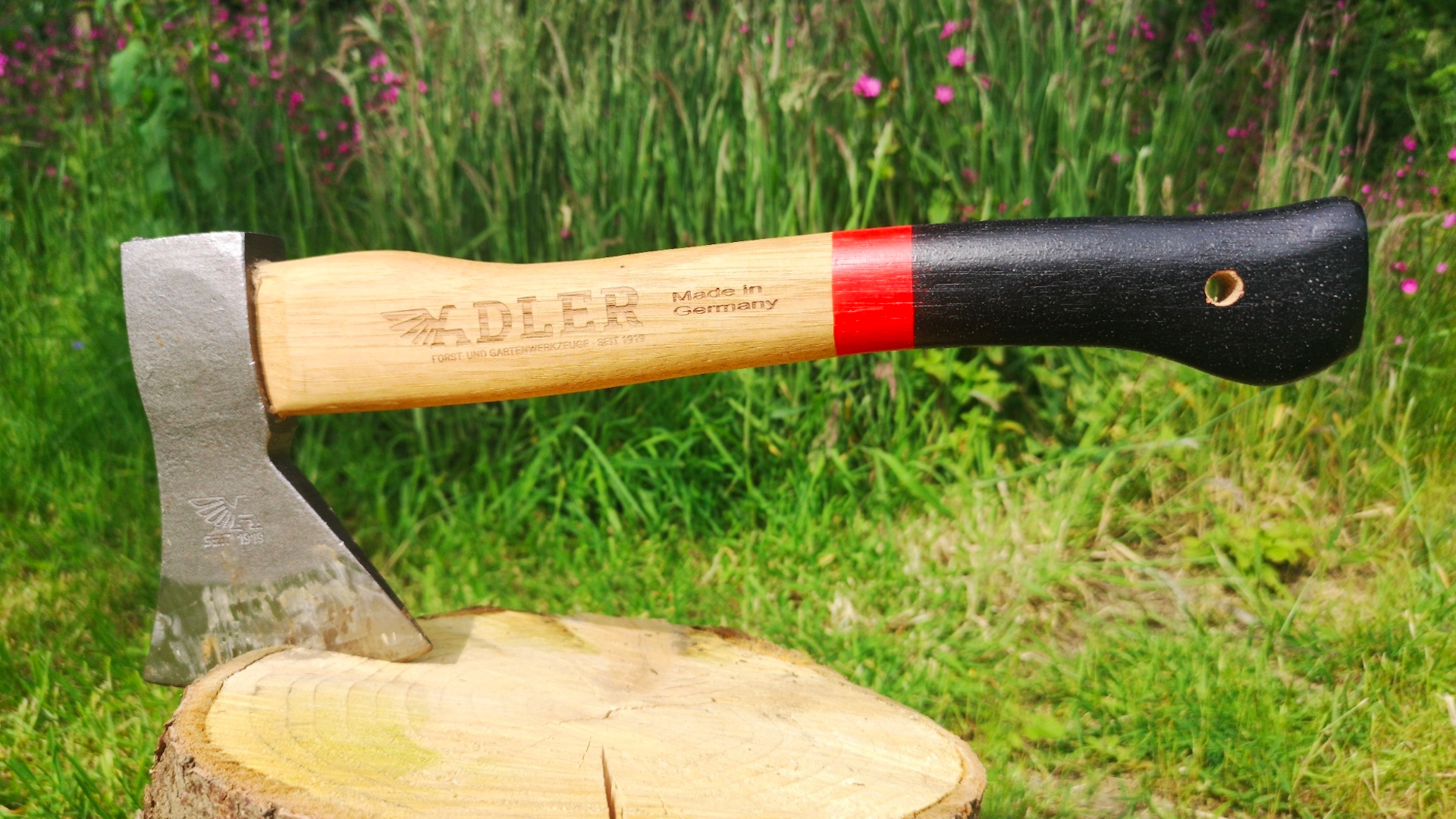Advnture Verdict
Based on a traditional German pattern originating from the Rheinland region – hence the name – this compact-yet-capable hatchet combines heritage looks with German craftsmanship. The result is a versatile, multi-purpose tool that is perfectly suited to camping and outdoor use.
Pros
- +
Versatile tapered bit
- +
High quality, German-forged steel head
- +
Hickory handle with anti-slip finish
- +
Supplied with high-quality leather head mask
Cons
- -
Price
You can trust Advnture
Adler 1919 Rheinland hatchet: first impressions
As the name “Adler 1919 Rheinland hatchet” suggests, Adler 1919 is a brand with plenty of axe-making history – over a century’s worth of knowhow, in fact.
Originating in Josef Schmitt’s small village blacksmith’s shop in Wiesental, southern Germany, the company has grown to become a highly regarded manufacturer. Even today all Adler axes are still forged in Germany, albeit now in a larger purpose-built factory located in the town of Waghäusel, close to the River Rhine in Baden-Württemberg, just south of the city of Heidelberg.
So, there’s impressive history behind the Rheinland hatchet. It shows too – this immediately feels like a high-quality tool, showing good craftsmanship in the quality of finish and attention to detail. It’s a stout little hatchet with handsome heritage looks that thoroughly deserves it place in our best camping axes and hatchets buying guide.
The forged carbon steel head is a very traditional and well-proven shape, with a flared beard or lower cutaway and an extended cutting edge. Viewed from above, it has a conventional tapered wedge profile, with thick lugs around the eye for added strength and heft. The back of the head has a chunky poll or butt that works well for hammering tent pegs or similar camp tasks. We were slightly surprised to find that our test sample wasn’t quite uniform here – one side of the poll had lost an edge during the forging process, meaning it wasn’t quite square. Still, it did not affect usability.

The Rheinland hatchet is hafted with a wooden split wedge and secured with a ring pin – but the finish here is superior to most rivals, with the wedge perfectly centered and no gaps in the eye. The head is extremely well seated on the handle.
The handle itself is made from American hickory. This will no doubt reassure US readers, though it might come as a surprise to some British and European readers, since most of our wooden-handled tools are typically hafted with ash. Both woods are renowned for their strength and stiffness – though hickory is usually considered to be the harder of the two woods. It makes for a very sturdy tool, particularly since our test sample showed fine graining and perfect orientation.
The handle is sanded but unvarnished, allowing the user to oil it, but the lower portion in finished with a sand-textured anti-slip black paint and a distinctive red or olive-green signature stripe. The handle is well sculpted, with a thinner throat than most small hatchets, which feels more elegant and precise. However, it still has enlarged shoulders for strength and a pronounced palm swell for a secure grip. It also has a drilled lanyard hole to add a leather thong or cord – ideal for hanging the tool around camp or in your woodshed.
• RRP: $84 (US) / £69 (UK)
• Weight: 830g / 1lb 13oz
• Blade length: 10.5cm / 4in
• Overall length: 36cm / 14in
• Head: Forged carbon steel
• Handle: Hickory
• Head guard: Heavy duty leather
Adler 1919 Rheinland hatchet: in the field

The head weight of this hatchet is 1.35lb or just over 600g, and we found that it delivered more grunt than slightly lighter rivals like the Stihl AX6 or the Husqvarna hatchet. It’s extremely comfortable and secure in use, thanks to that nicely sculpted handle and anti-slip grip.
The versatile design will split small logs, chop kindling and sned branches. The wide cutting edge has plenty of belly, ensuring that this hatchet delivers good penetration in soft or hardwood. And though it’s best used around camp, it will also deal with greenwood and standing deadwood if you need to clear overhanging tree limbs from the trail.
Despite its similar capabilities to the Stihl or Husqvarna hatchets we tested, however, it is slightly lighter and more compact overall than either. That makes it even better suited to camping and bushcrafting skills, since it will easily slide into a bag or strap onto the outside of a hiking backpack. It also comes with a high-quality leather head guard that protects the bit effectively.

The shorter handle does limit cutting power a little, but that’s true of hatchets in general. And it is worth noting that if you do need more leverage, Adler produces a longer axe called the Canoe Axe, which has the same head as the Rheinland Hatchet but mated to a 19.5in handle.
This hatchet has a large head cutaway, so you can choke up for finer work, ideal for carving and whittling projects. As with most small hatchets, the shoulders are perhaps fractionally too thick to be comfortable for smaller hands, but it would be easy enough to thin it down with a rasp and a few sanding sheets if desired.
The steel is of high quality and the axe came with a keen edge. After a few weeks of hard use, we had put a couple of small nicks in the cutting edge, but it was still splitting seasoned ash and softwood without any problems. The edge sharpened up easily with a circular whetstone.
All in all, this is a very versatile and well-made tool with plenty to recommend it and no real negatives to speak of. It is more expensive than the hatchets we tested from Stihl and Husqvarna, but then you get a better-quality product, and one that is still cheaper than a traditional hand-forged hatchet from Hultafors or Gränsfors Bruk. For a tool that will probably last a lifetime if you look after it, that’s solid value – and besides, you can think of it as an investment in adventure…
An outdoors writer and editor, Matt Jones has been testing kit in the field for nearly a decade. Having worked for both the Ramblers and the Scouts, he knows one or two things about walking and camping, and loves all things adventure, particularly long-distance backpacking, wild camping and climbing mountains – especially in Wales. He’s based in Snowdonia and last year thru-hiked the Cambrian Way, which runs for 298 miles from Cardiff to Conwy, with a total ascent of 73,700 feet – that’s nearly 2½ times the height of Everest. Follow Matt on Instagram and Twitter.


